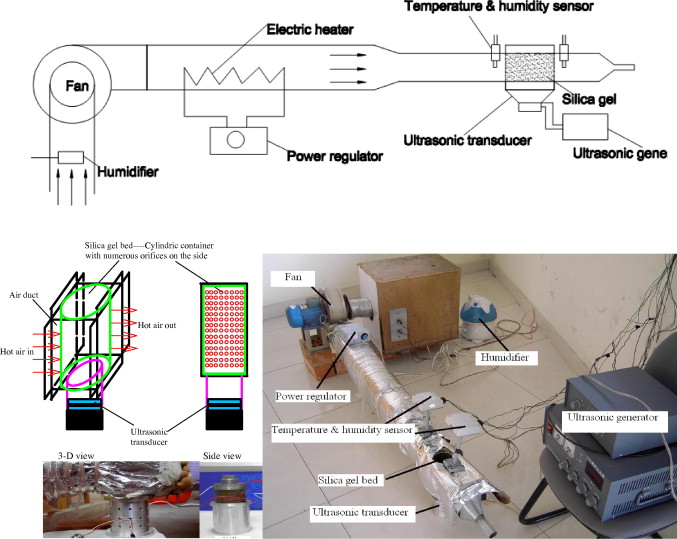Silica gel (SiO2), as a high-performance desiccant has been paid increasing attention to for its characteristic of heat and mass transfer during silica gel–moisture interactions. Although silica gel has been frequently used as desiccant, it has its weakness of the relatively high regeneration temperature. Many non-heating method of regeneration by using ultrasound models set up to solve this problem proved empirical and difficult to be generalized. As a result, it is necessary to build a theoretical model to help us understand the natural essence of regeneration process by ultrasound.
This research presents a theoretical model on the heat and mass transfer in silica gel packed bed during the regeneration process by using hot air combined with high-intensity ultrasound. The model contains two parts: one is about the sound propagation in porous media; the other is about the fundamental heat and mass transfer process in the silica gel packed bed. The theory of sound propagation in porous media is employed to solve the acoustic pressure in the packed bed.
Afterwards, the model is validated with the experimental exit air humidity and temperature by conducting a series of runs with difficult inlet conditions of air stream. The validity of model can be evaluated by mean relative error (MRE,%). The experimental setup shown below in Fig.1 mainly consists of the silica gel bed, the ultrasonic transducer, the ultrasonic generator, the fan, the duct and the electric heater with a power controller.

Fig. 1 Schametic diagram and photograph for experimental system.
Consequently, the comparisons between the theory and the experiment indicate that the MREs of the calculated exit air temperature and humidity compared with the experimental ones are mostly within 2.0%.
As a result, the comparisons are favorable within the uncertainty range, which proves that the theoretical model developed in this study is correct and will give good prediction for the important features of the silica gel regeneration process by using hot air combined with an ultrasonic field. As well, it can be used for further parametric analysis and the optimization design of the packed bed for silica gel regeneration assisted by the high-intensity ultrasound.
This research result was published online http://www.sciencedirect.com/science/article/pii/S0017931012005649 and on the recently issued International Journal of Heat and Mass Transfer (Vol. 55, No. 23–24, Pages 7133–7143, November 2012).


